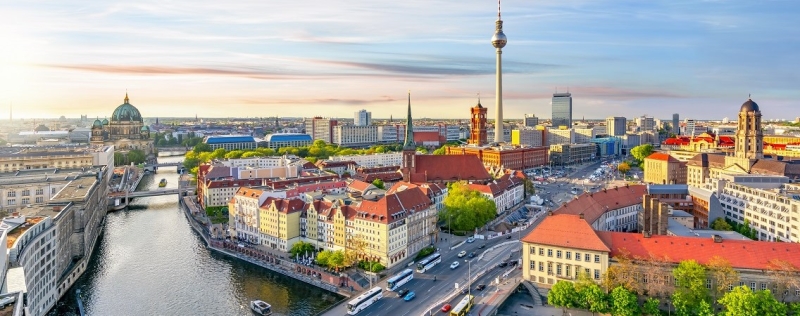
The capital of Germany is difficult to describe in a few words. Berlin, a city of contrasts, stands on the banks of the Spree River and is one of the most interesting metropolises in Europe. It is also a mecca of contemporary art with many galleries and eccentric installations. We’ll tell you what to visit if you’re in the city for a couple of days.
Entry rules
Russians will need a passport with a Schengen visa. The cost of registration is 80 euros for an adult (about 5,800 rubles*).
How to get there
From Moscow to Berlin you can fly with transfers in Istanbul, Antalya, Ankara and Cairo. Round trip ticket prices start from 36,000 rubles*.
Where to stay
THE DUDE Berlin-Mitte (rating 8.9) – a retro-style hotel near Alexanderplatz. A night in a standard room costs from 15,000 rubles*.
Gemütliches Hausboot mit Kamin in Berlin (rating 10.0) – a floating hotel near Treptower Park with a fireplace and its own boat. For one night on the river, pay from 15,500 rubles*.
TITANIC Comfort Mitte (rating 8.2) – a modern hotel in the city center. A night in a standard room costs from 17,000 rubles*.
Eurostars Berlin (rating 8.6) is a five-star hotel in the west of the city with an indoor pool. A night in a spacious room will cost from 27,000 rubles*.
What to see
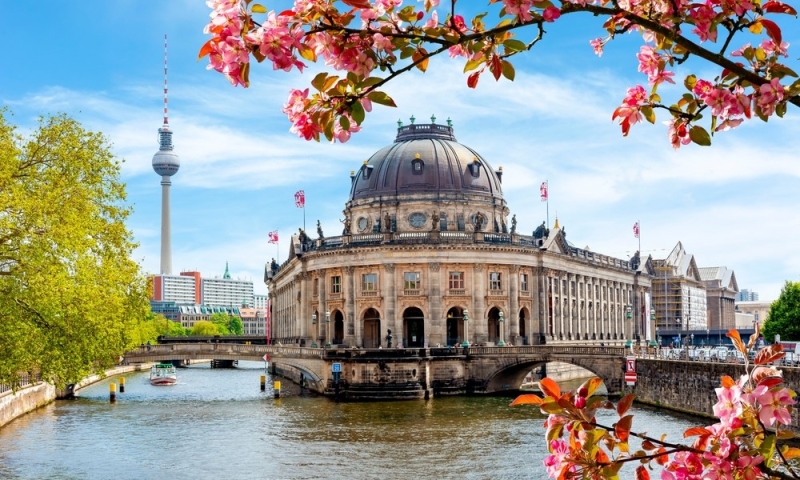
Day 1. Walk through historical places
East Side Gallery
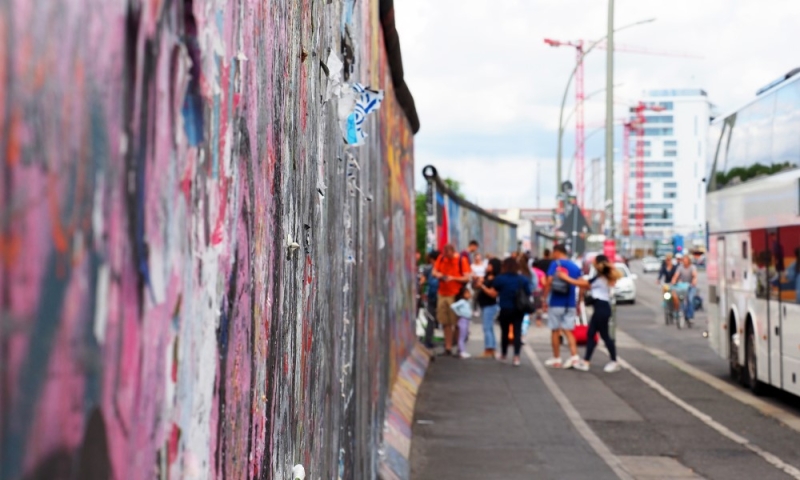
When the Berlin Wall was destroyed, there was a piece of it almost 1.5 km long along the banks of the Spree River and a metal line on the asphalt – instead of the “fallen” part. Now it is the world’s largest open-air art gallery – a fragment of the wall has become a concrete canvas for 118 artists from 21 countries.
The most popular works here: “Brotherly Kiss” between Brezhnev and Honecker by Dmitry Vrubel, “Trabant” by Birgit Kinders and the caricatured faces of Thierry Noir. You can walk through the gallery and stop to look at works that resonate with you, visit as part of a tour and learn the history of the paintings, or ride past on a bicycle.
The Memorial to the Murdered Jews of Europe
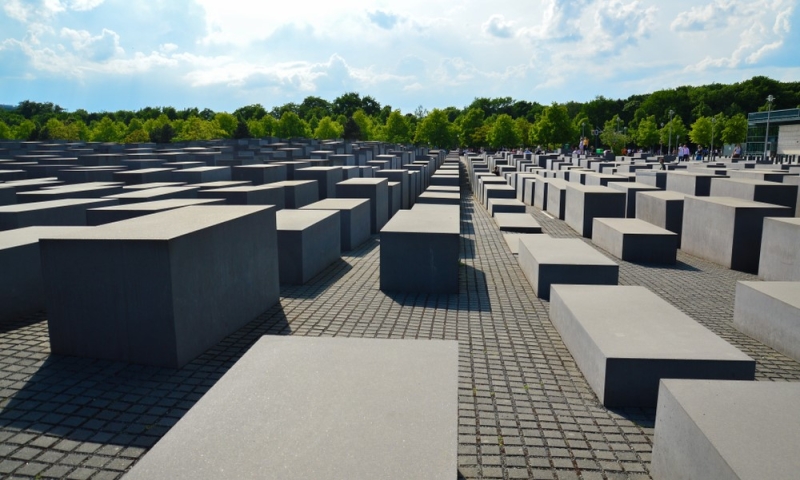
The memorial to Jews killed during the Holocaust consists of 2,271 concrete slabs. They are different heights, but identical in width and length. From the outside it seems that these are “concrete sarcophagi” for those who were not buried. In fact, the authors calculated the distance between the blocks so that people could not walk in pairs, only one at a time, feeling loneliness and uncertainty, as the Jews felt during the Holocaust.
The information center shows the entire history of the oppression of Jews in Nazi Germany, and presents authentic items and letters from people. And in one hall they conduct an audio performance: they tell the stories of fifteen families.
Reichstag building and Brandenburg Gate
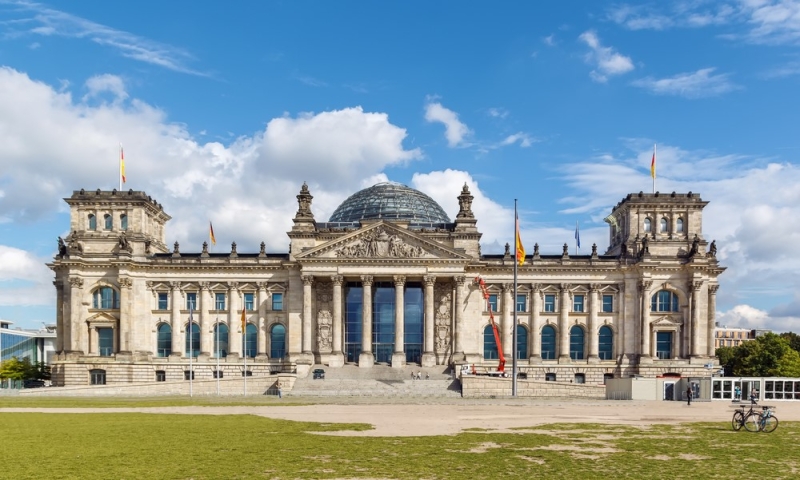
The name Bundestag was assigned to the symbol of Germany at different times. The building has been renovated to take into account the country’s important past and technological future, which go hand in hand. For this purpose, a futuristic glass dome was designed with a panoramic view of Berlin’s iconic places. In the center there is a mirror cone that directs sunlight into the building – this helps to take care of the environment: use daylight and reduce carbon dioxide emissions.
And although the building now houses the current parliament, you can get inside with a free tour. Upon entering the rooftop terrace, you will be offered a free audio guide (available in Russian). It is interactive – the story will begin as soon as you climb to the dome, and will continue depending on your location.
The Brandenburg Gate stands next to the Reichstag building. They were built at the end of the 18th century and have served as a tourist attraction ever since.
Futurium Museum
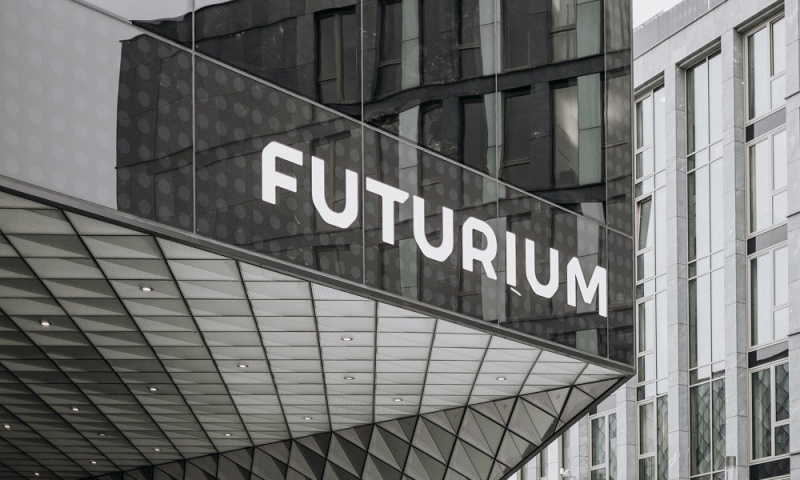
It stands on the river bank not far from the Brandenburg Gate and from the outside it looks like a large black cube. If you take a cruise on the Spree, you can enjoy views of the building from the water. This museum is not without reason called the “house of the future” – it is completely self-sufficient in electricity from solar panels, and inside there is the most modern equipment for experiments, available to everyone: robotic hands, a library, 3D printers and laboratories.
For those who come to relax rather than explore, there are plenty of puzzles and interactive exhibits that will appeal to visitors of all ages.
The exhibition is unique in that it literally talks to you – it also offers projects of cities of the future, reflections on the topic of consumption, green energy, the future of transplantology and new materials. Here you can not only read the signs near the exhibits, but also listen, enter into dialogue with them, and even try on the models for yourself. And it’s completely free.
Alexanderplatz Square
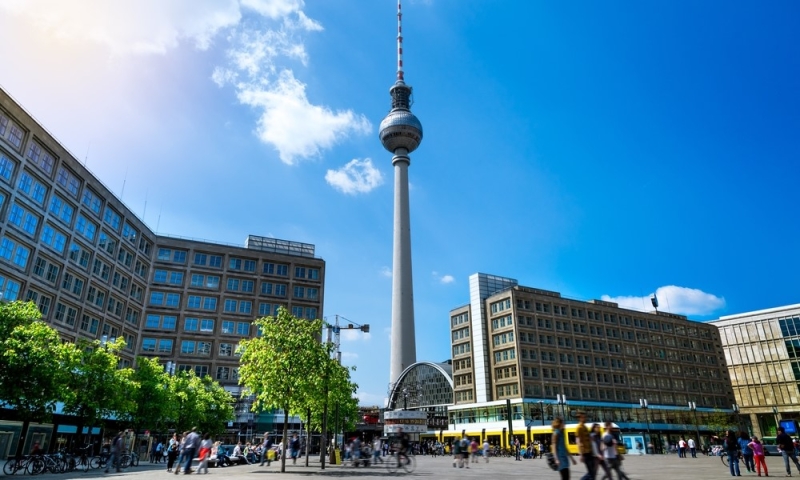
Here are two symbols of the German capital: the Berlin TV Tower, the tallest building in the city, and the World Clock. In general, Alexanderplatz is the largest shopping area; now there are several large shopping malls here. In the center stands the Neptune Fountain, which has adorned Berlin since the beginning of the 20th century. The square is located in the center of East Berlin, which can be determined by the style of the surrounding architecture. Getting here is very easy – any type of public transport has the Alexanderplatz stop. Therefore, the square is also an excellent point to start the journey.
Day 2. Cultural holiday
Tempelhofer Feld
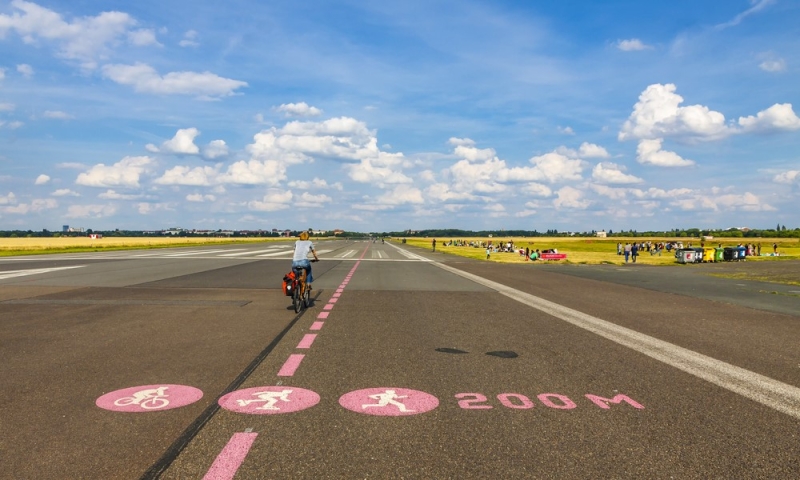
Tempelhof Airport operated until 2008. Today it is a giant park where you can relax in nature and walk along the runway. Locals come here to jog, ride bicycles under the old radar station and relax in the barbecue areas. There are also playgrounds, zip lines and sports equipment rentals.
Zoo
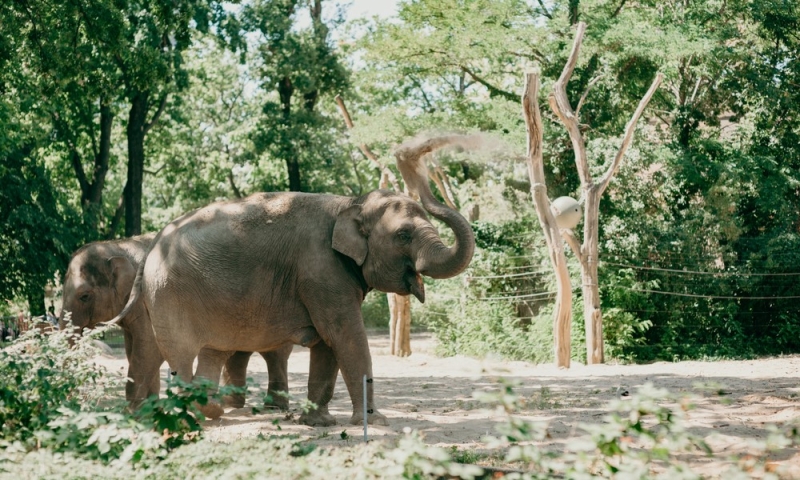
It is surprising in that there are no cages inside – all the animals are in open enclosures. Each of them is stylized to resemble a natural habitat: trees grow over a large area, stones lie, a river flows, and there are even caves and shelters. Along the edges of the enclosures there is a ditch dug, which is filled with water, and behind it there is a low fence for visitors. It turns out that the animals are literally at arm’s length from you.
At the entrance you will be given a card on which the feeding times of the animals are marked. Zoo staff tell many interesting facts about their charges and show what tricks they can perform.
There are inexpensive cafes and eateries serving national cuisine on the territory: you can try the legendary currywurst or German sausages of all types: Berlin, Thuringian and Munich. The entrance ticket costs 15.5 euros (about 1,300 rubles*) for an adult, with a visit to the aquarium – 21 euros (about 1,800 rubles*).
Museum Island
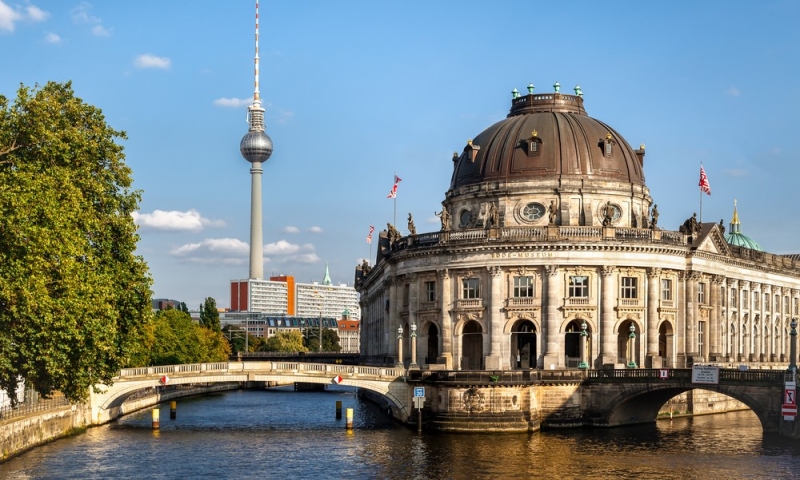
On the banks of the Spree River there is an entire UNESCO World Heritage Site, which consists of five Prussian buildings, each of which has its own peculiarity. The museum’s collections span 6,000 years of art and history. The Altes Museum houses many Greek, Etruscan and Roman antiquities, while the Neues Museum houses the island’s most popular treasure: a 3,300-year-old bust of the Egyptian queen Nefertiti. The Alte Nationalgalerie resembles a Corinthian temple from the outside, but inside houses a collection of art from neoclassical to early modernism, including a parade of 19th-century French masters Monet, Manet and Renoir. The Pergamonmuseum is dedicated to the ancient world, from Rome and Greece to Babylon and the Middle East. Especially notable among other antiquities is the Pergamon Altar (160 BC), which is decorated with a frieze depicting the battle of gods and giants. The Bode Museum houses one of Europe’s greatest collections of sculpture, spanning German, Italian and French works from the Gothic to the Neoclassical periods.
It is almost impossible to visit all five museums in one day; it is better to choose one or two. A ticket for each visit costs from 10 euros (about 850 rubles*), and a common ticket for everyone for one day costs 19 euros (about 1,600 rubles*). If you want to go around the entire exhibition, it is more profitable to take a three-day ticket with the right to visit all museums and the panorama; it costs 29 euros (about 2,450 rubles*).
Charlottenburg Palace
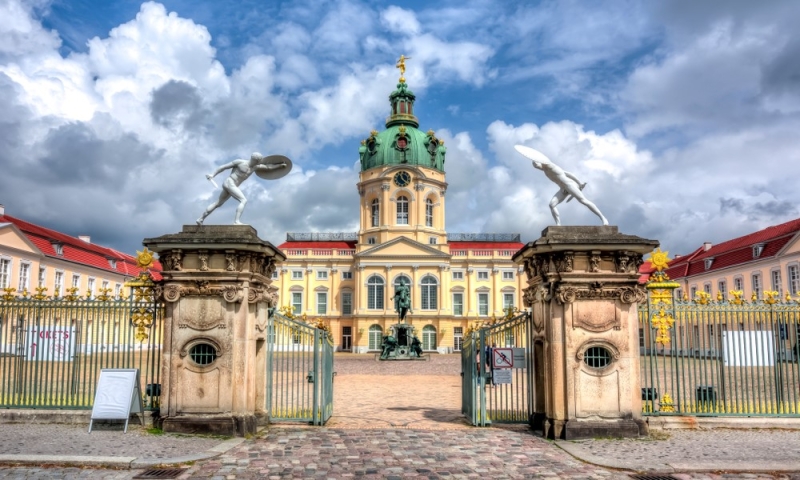
It was built at the end of the 17th century as a summer residence for Princess Sophia Charlotte of Brandenburg, wife of King Frederick I. Now it is the largest Baroque palace in Berlin, inside which there is an exhibition complex. The collection includes royal porcelain and silver, jewelry, crowns and furniture. Visitors come here to marvel at the size of the Ballroom, which served as the main reception area, or to explore the art gallery of the Round Hall. Works by French artists of the 18th century are kept there. The remaining rooms are also rich in gilding and frescoes.
In addition, on the territory there are two winter gardens, a greenhouse and a large park with an area of 56 hectares. The gardens, designed in French and English styles with orderly hedges, fountains, ponds and tree-lined gravel paths, are the highlight of the museum. All this makes Charlottenburg a real pearl of Berlin and an excellent destination for tourists who love history, culture and architecture.
*Prices are current at the time of publication.

